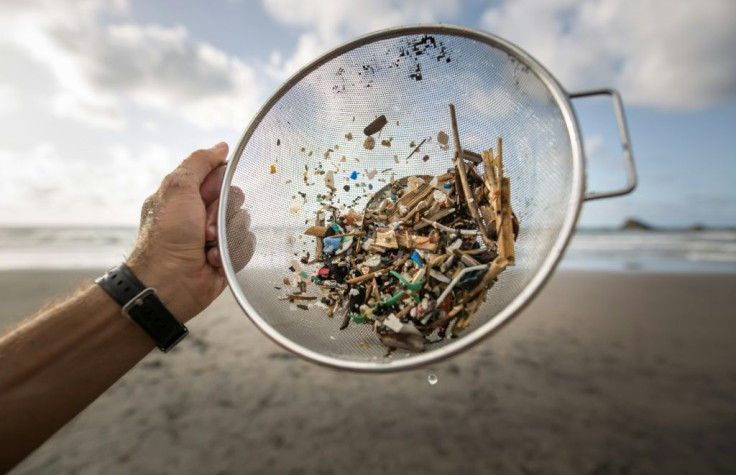Airborne Microplastics: People May Be Exposed To Thousands Each Year, Study Finds
KEY POINTS
- Researchers analyzed microplastics in various indoor and outdoor settings in Sri Lanka
- They found that people could be exposed to more than 2,600 airborne microplastic particles each year
- "(F)urther research should evaluate possible trends and health risks upon inhalation," the researchers noted
Researchers have found higher concentrations of airborne microplastics indoors than outdoors, shedding light on people's potential exposure to them.
For their study, published in Environmental Science & Technology, a team of researchers sampled airborne microplastic concentrations in various areas in Sri Lanka. These included both indoor and outdoor locations of places such as coastal, urban, rural, industrial and natural habitat areas, Griffith University noted in a news release.
"Airborne microplastics (AMPs) have been reported in indoor and outdoor air in high-income countries and are expected to be a significant contributor to daily microplastic (MP) exposure for human beings," the researchers wrote. "To date, there are only a handful of studies in lower-middle-income countries."
Microplastics are tiny pieces of plastic that can come from various sources such as the microbeads used in some health beauty products or larger plastics that have degraded into smaller bits. Their exact impacts are still unclear, but recent studies have shed light on their extensive reach, finding them in places like people's poop and blood, to cups of on-the-go coffee and the water trapped in plants' leaves.
And for their study, the researchers focused on something that people might not even be considering as they go about on their normal days: airborne microplastics.
"While the inhalation of MPs is suggested to be an important pathway of human exposure to plastics, there is very little data on their concentration in the air," one of the study authors, Kushani Perera of the Australian Rivers Institute, said, as per the Griffith University release.
The researchers found that the concentrations of microplastics were much higher indoors than outdoors, being one to a whopping 28 times higher than the concentrations outdoors. And that's "regardless of the type of outdoor environment," the university noted.
Outdoors, concentrations were higher in high-density sites, suggesting that population density also plays a role, one of the study authors, Professor Frederic D.L. Leusch of Australian Rivers Institute, explained, as per Griffith University.
The most dominant type of microplastics was PET fibers, whether the setting was outdoors or indoors. This, the university noted, comes mainly from clothes and textiles. The second most prominent type was polyester, suggesting that textiles may indeed be a "major source" of airborne microplastics.
All in all, with people spending much of their time indoors, the researchers estimate that each person may be exposed to an average of 2,675 airborne microplastics each year.
Are we breathing airborne microplastics? Study finds higher concentrations indoors @griffith_uni @EnvSciTech https://t.co/A2fH29IeF8 https://t.co/5BUZ12m4jp
— Phys.org (@physorg_com) January 10, 2023
Although the exact impact of microplastics on people's health remains to be seen, the researchers' work highlights another potential way in which humans can get exposed to microplastics.
"This study provides the first report on AMPs in Sri Lanka," the researchers wrote. "Considering population growth and industrialization, further research should evaluate possible trends and health risks upon inhalation."

© Copyright IBTimes 2024. All rights reserved.






















